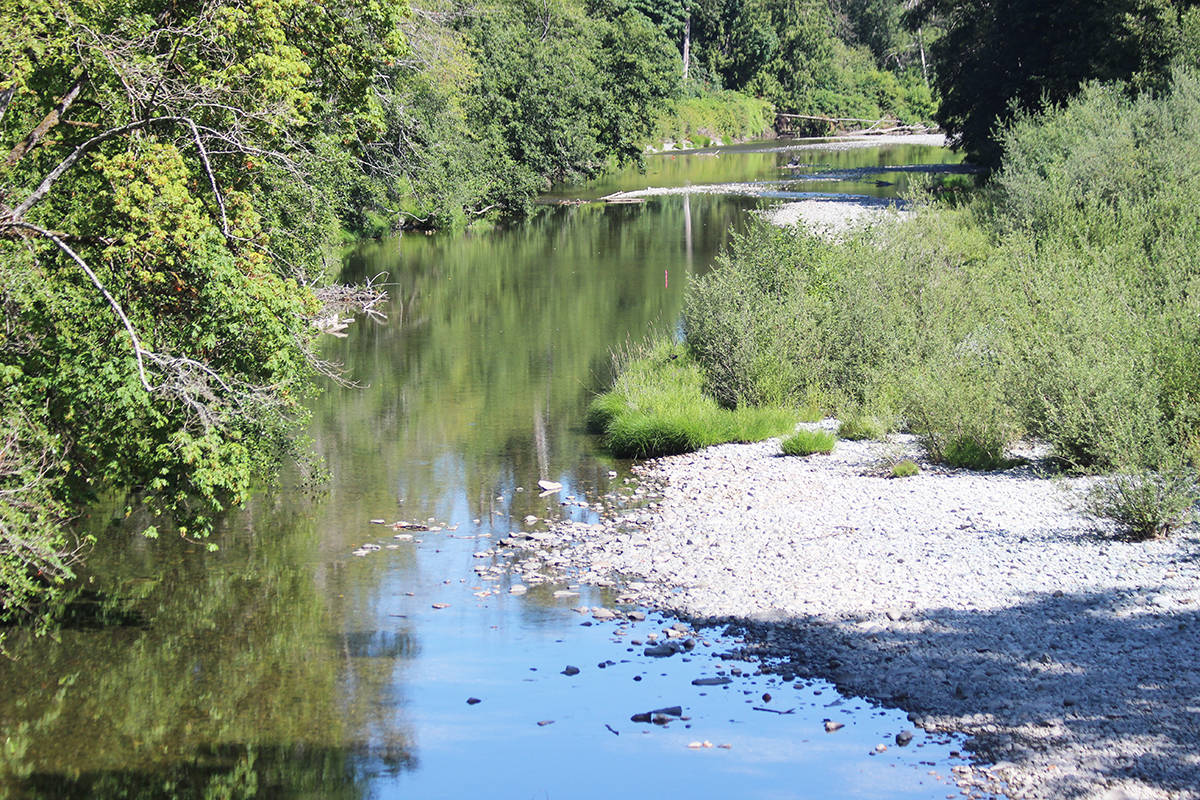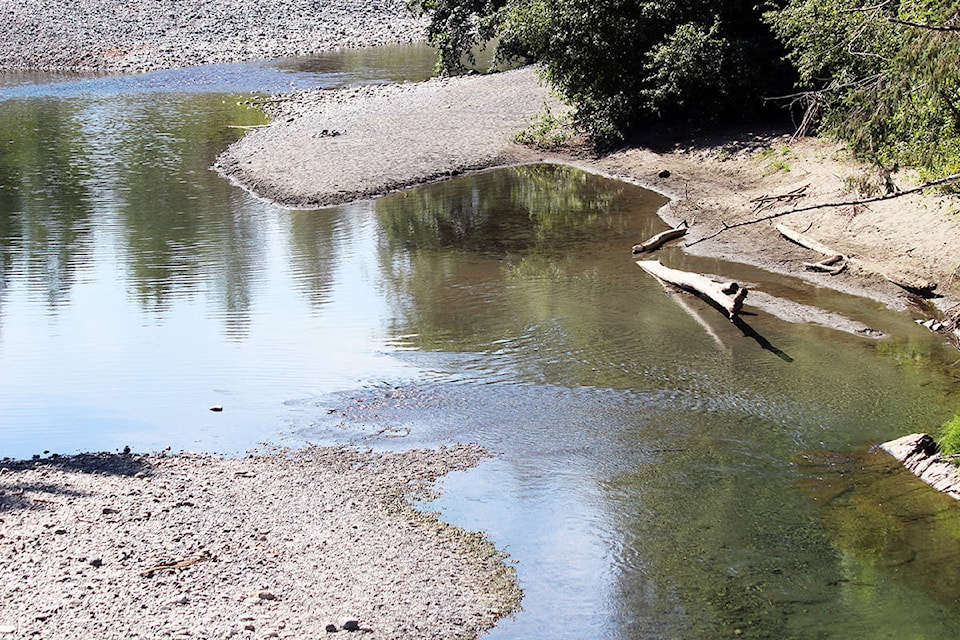The Chemainus River watershed is on the list of concerns for risk of impacts from water scarcity and drought.
In a release from the Ministry of Forests, Lands, Natural Resource Operations and Rural Development, other watershed areas of concern include but are not limited to Sandhill Creek, Koksilah River, Millstone River, Tsolum River, Black Creek, Fulford Creek on Salt Spring Island, as well as the majority of the Gulf Islands.
Related story: Logjams and gravel bars the bane of Chemainus River’s existence
Drought is already hitting much of Vancouver Island and southern British Columbia hard, due to low spring rainfall amounts, as well as the recent extreme heat wave and record high temperatures in June and early July across the entire region. And it’s only early July and projected to get worse.
The East Vancouver Island Basin is at Drought Level 4 where adverse impacts on people or ecosystems are likely. Adverse impacts on fish have been observed, due to very high water temperatures combined with low flow conditions, dewatering of riffle habitats and disconnected side channels.
Water conservation is being urged across the region to help reduce the risk of significant impacts on the environment or other water users.
The B.C. drought levels rank from 0 to 5, with Level 5 being the most severe and only one notch away from where the region is at now.
The West Vancouver Island Basin, stretching from Cape Scott to Jordan River, is currently under Drought Level 3. Many other watersheds throughout central and southern B.C. are also experiencing drought and water scarcity.
Residential, agricultural and industrial water users in areas affected by drought should observe all water conservation bylaws, watering restrictions and advice from local government, irrigation district or water utility.
General water conservation tips at home include: limiting outdoor watering; not watering during the heat of the day or when it is windy; planting drought-tolerant vegetation; taking shorter showers; not leaving taps running and installing water-efficient showerheads, taps and toilets.
Recommendations on the farm include: implementing an irrigation scheduling program using real-time weather data; scheduling irrigation to match crop needs and soil storage capacity; improving water system efficiencies and checking for leaks; and focusing on high-value crops and livestock.
Industry should be reducing non-essential water use, recycling water used in industrial operations and using water-efficient methods and equipment.
North Cowichan Mayor Al Siebring said Friday afternoon he would expect increased watering restrictions to follow.
“I’m not the one that makes that call, that’ll be our staff,” Siebring said.
At Drought Level 4, “I won’t be surprised to see if we do change our water restrictions, too,” he added.
Visit the B.C. Drought Information Portal at: https://governmentofbc.maps.arcgis.com
– with a file from Sarah Simpson, Cowichan Valley Citizen.

